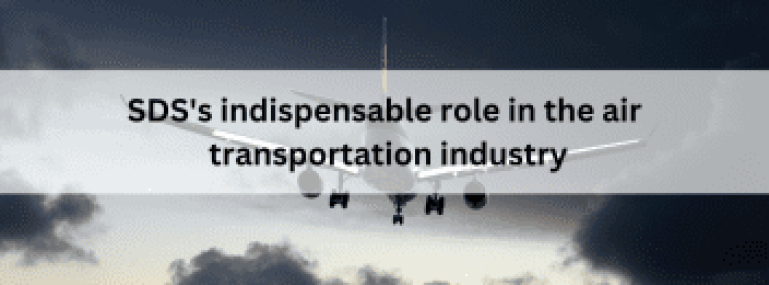A safety data sheet is a document that provides safety information about a product. They are a complete source for all the information you may need or want to know about a chemical product you may need or want to know. Globally, they are used to transmit detailed information about a chemical product, including how it should be used, what effects it has, how to protect against those effects, what regulations apply to chemicals, and other information about how they should be used.
There are several challenges involved in transporting hazardous materials. To meet numerous safety restrictions limiting free passage, it is necessary to move dangerous loads with great care and caution. In accordance with the Dangerous Goods Regulations (DGR) manual of the International Air Transport Association (IATA), dangerous goods include articles or substances that pose a threat to health, safety, property, or the environment, and which are listed on the IATA Dangerous Goods Regulations list. Some examples of dangerous goods are aerosols, lithium batteries, and infectious substances.
A Safety Data Sheet provides detailed information about a substance or mixture used at work. Using it, both employers and workers can learn about safety precautions and hazards. SDS acts as a reference source for hazardous chemicals management in the workplace.
SDSs provide all the information about chemical classification in air cargo, regardless of whether it is restricted. It must be prepared and accepted according to IATA dangerous goods regulations if it is restricted and classified as a dangerous goods shipment. The airline must receive the proper and trusted SDS attached to the shipping documents if the chemical is not restricted. The airline follows this policy to ensure the safety of its cargo.
The SDS includes all relevant transportation information in section 14. The UN Number identifies hazardous substances (e.g., explosives, flammable liquids, toxic substances, etc.). The UN Proper Shipping Name describes the hazards associated with the goods. According to transport regulations, all dangerous goods must be assigned to a Proper Shipping Name. A transport hazard class is determined by its most significant hazard. Depending on the level of hazard, a packing group number will be assigned (e.g., I, II, III, 1A, 1B, and 1C). To determine whether a substance is an environmental hazard, it is necessary to determine whether it is a marine pollutant. Users should be alerted to any special precautions in this section. There is additional safety and hazard information regarding bulk shipments.
As required by regulations, safety data sheets help to keep safety data sheets up to date. As a result, compliance issues and costly fines can be avoided. A SDS on hand always provides workers with the resources they need to handle materials safely and reduce their risk of an accident. Workplace illnesses and injuries caused by chemical sources are reduced. To protect themselves from hazardous chemical exposures and to work safely with chemical products, employers and employees need to have information contained on SDS.
Industries and companies benefit greatly from safety data sheets. Whether you are a small business or a large corporation, everyone needs SDS. SDS are required for manufacturing, processing, importing, exporting, and transporting substances. In reducing risks and mitigating accidents, this framework is very useful.
Compliance XL offers a wide range of SDS services to assist organizations with effective SDS management. Our experts will ensure there are no accidents during storage and disposal. Get hassle-free SDS services from Compliance XL Today. Our compliance services include SDS authoring, REACH, RoHS, and Conflict Minerals compliance.
FAQs:
1.What are the 16 sections of a Safety Data sheet?
It includes the identification of hazards, their composition, first aid, firefighting, accidental release measures, handling and storage, exposure controls/personal protection, physical and chemical properties, stability and reactivity, toxicological information, ecological information, disposal considerations, transport information, regulatory information, and other information.
2.What is the difference between MSDS and SDS?
Material Safety Data Sheet (MSDS) does not have hazard statements, signal words, pictograms, ingredients, and percentages of mixed chemicals. SDS is more standardized with 16 sections in a regulated format.
3.What is IATA?
The International Air Transport Association (IATA) represents the world’s airlines. Supports many aviation activities and contributes to the formulation of aviation policy.





